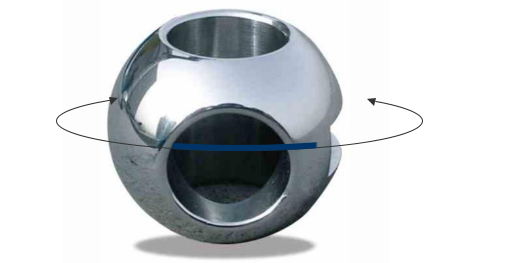API Ball Valve Body offer a simple way to turn the flow of fluids or gases through a pipe off or on with the assistance of a secure seal. The handle of these valves moves in a 90-degree (or"quarter turn") range of movement. The valve in its simplest form consists of a sturdy metal joint housing containing a spherical ball with a hole drilled through the center. A slot in the top of the ball connects with the stem of a handle extending to the exterior of the pipe.
In the"open" place, the fascia running through the middle of this ball contrasts perfectly with all the openings of the input and output pipes situated on each side; it permits the contents of the input to flow through the ball to attain the output . However, turning the grip of the ball valve to the"closed" position will close off the flow completely. This action turns the ball, placing its launching perpendicular to the flow of material in the pipes. A closed ball valve provides a safe method to shut off the flow of natural gas, oil, water, or other gases or liquids. It offers a more convenient type of handle than a clumsy gate valve for most residential uses.
OEM Flanged Ball Valve Body manufacturers produce valves with two primary design options: floating ball along with a trunnion. A floating ball valve employs a non-fixed ball to float into place against the chair, giving a tight seal. A trunnion fixes the ball in a certain place and can be used for more complicated applications and, thus, is costlier. The handle, that can be motorized, manual or actuated rotates the ball a one-quarter turn. After the gap of the ball is facing away from the pipe opening, flow is limited. When it's aligned with the introduction, flow is restored. The position of the handle immediately indicates whether the valve is open or closed. Ball valves are manufactured from a variety of materials, the most common being stainless steel, brass, cast iron and plastic such as PVC. The size of ball valves can also change. 3-way and flanged ball valves are variants in ball valve manufacturing. Ball check valves allow fluids to flow in just 1 direction and high-pressure ball valves allow low and high flows of pressure and temperatures.
